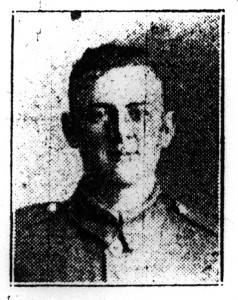Horace Harding
Private 19963
1st Battalion Royal Scots Fusiliers
Horace was killed in action on 25 October 1916 and he was buried at Euston Road Cemetery, Colincamps, Somme, location I.C.6. This cemetery was a frontline burial ground during and after the unsuccessful attack on Serre on 1 July. The whole of Plot I represents the original cemetery. After the Armistice graves were brought to the cemetery from outlying areas.
The notification of Horace’s death was published in the Reading Standard on 2 December 1916 but no family details were given.
Initially, it was quite difficult to identify the H. Harding named on the Alfred Sutton War Memorial. CWGC records showed over sixty men named H. Harding but many lacked the personal details that would link an individual to Reading. However, an article about the unveiling of the Trinity Congregational Church War Memorial in the Reading Standard revealed the name of Horace Harding along with a number of the other Boys who attended the church. Yet again Soldiers Died was invaluable and a search indicated that Horace was a private, with the 1st Battalion Royal Scots Fusiliers.
Accessto Ancesty UK revealed that Horace was the son of George and Annie Harding of 88. Amity Road, Reading. His year of birth was given as 1897. He was 13 in 1911 and no occupation is given so it is assumed that like his younger sister that he was still in school. George Harding and Horace’s older sister and brother all worked at the biscuit factory. Details of his attestion reveal that he was a shop assistant when he attested in August 1915, his age is given as 18years and 8 months. He probably lied about his age when he attested. No picture has been found of Horace but the military record states that he was fair haired with blue eyes, 5ft 2inches tall and weighing 116lbs.
